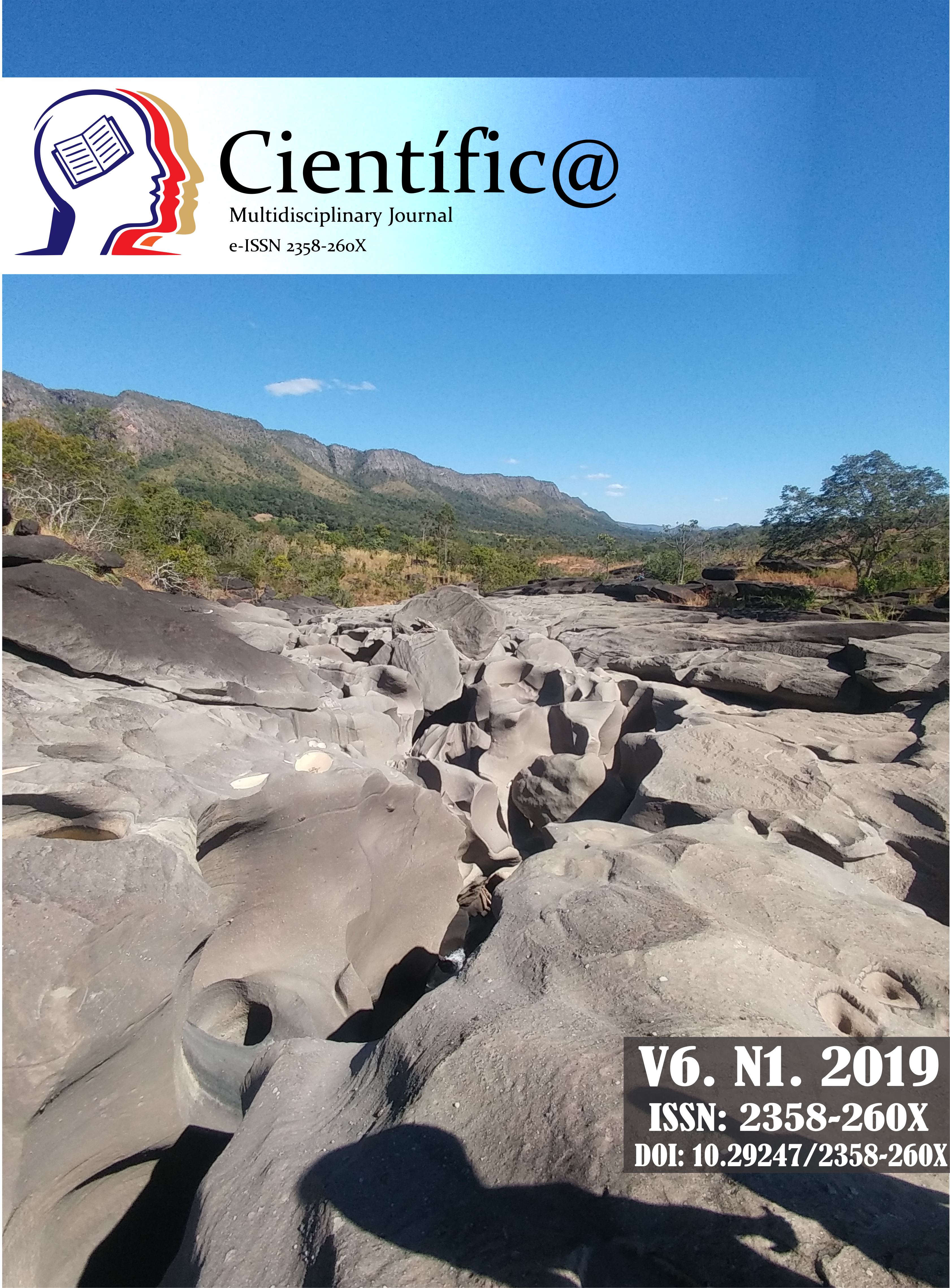Indução fitoalexinas em cotilédones de soja e hipocótilos de feijão em função da aplicação de agentes de biocontrole
DOI:
https://doi.org/10.29247/2358-260X.2019v6i1.p113-118Resumo
A indução de resistência de plantas a patógenos é uma ferramenta que pode ser incorporada ao manejo integrado de doenças de plantas cultivadas. Assim, o objetivo deste trabalho foi avaliar a ação elicitora de agentes do biocontrole na indução de gliceolina. Para isto foi utilizado as concentrações 0,0; 0,5; 1,0; 1,5; 2,0 e 4,0%, do concentrado de esporos, diluídas em água, da suspensão de esporos dos microrganismos Trichoderma asperellum BV10, Bacillus subtilis BV02 e Bacillus amyloliquefaciens BV03. Para determinação da gliceolina, cotilédones foram cultivados em areia, pesados e cortados em secção longitudinal na superfície inferior. Posteriormente, estes foi depositado 50 µL das concentrações nos cortes e a extração realizada em H2O e concentração determinada por absorbância no comprimento de onda 285nm. Os resultados foram submetidos à análise de variância e comparados pelo teste de regressão (p<0,05). Ao mensurar a gliceolina em cotilédones de soja, houve aumento no acúmulo de fitoalexina à medida que aumentou a concentração de células B. subtilis BV02. A concentração 4,0% de B. subtilis BV02 promoveu 237% mais acúmulo de gliceolina em cotilédones de soja que a testemunha. O acúmulo de gliceolina foi incrementado conforme se aumentou a concentração de células de T. asperellum BV10, de forma que concentração 4,0% promoveu 228% mais acúmulo de gliceolina que a testemunha. Ao aumentar a concentração de células Bacillus amyloliquefaciens BV03 aumentou-se o acúmulo desta fitoalexina. A concentração 4,0% promoveu 129% mais acúmulo de gliceolina em cotilédones de soja que a testemunha. Os microrganismos Trichoderma asperellum, Bacillus subtilis e Bacillus amyloliquefaciens são indicados como ativadores de mecanismos de resistência de plantas de soja.
Downloads
Publicado
Como Citar
Edição
Seção
Licença
Esta revista oferece acesso livre imediato ao seu conteúdo, seguindo o princípio de que disponibilizar gratuitamente o conhecimento científico ao público proporciona maior democratização mundial do conhecimento.
A partir da publicação realizada na revista os autores possuem copyright e direitos de publicação de seus artigos sem restrições.
A Revista Científic@ - Multidisciplinary Journal segue os preceitos legais da licença Creative Commons - Atribuição-NãoComercial 4.0 Internacional. 

